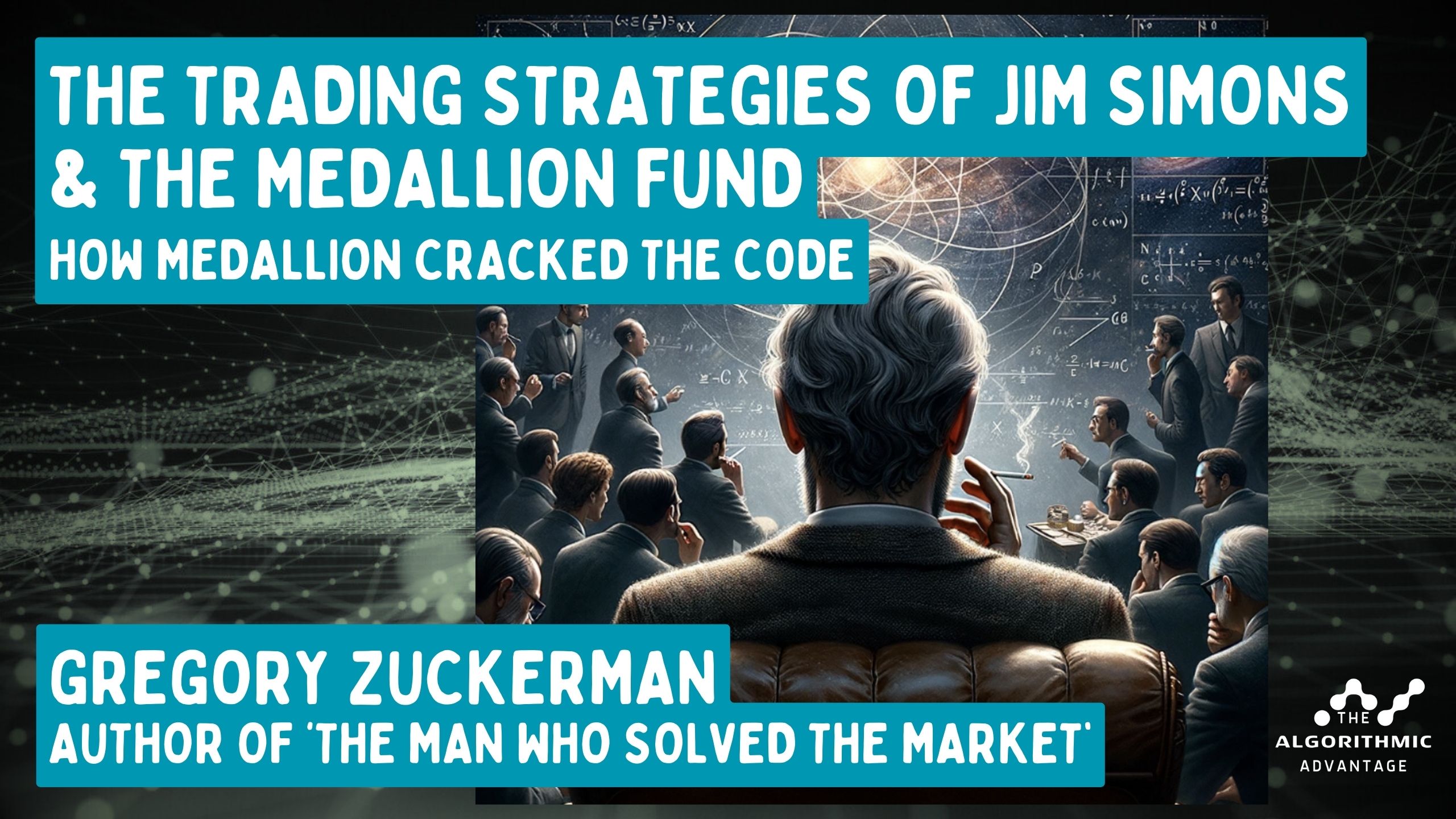019 - The Trading Strategies of Jim Simons' Medallion Fund with Greg Zuckerman

What were the Secrets to the Success of the Medallion Fund?
One can only speculate! And that we do on this show where we talk to Greg Zuckerman, author of ‘The Man Who Solved the Market – How Jim Simons Launched the Quant Revolution’.
We remember Jim, who recently passed away at 86, on the 10th of May 2024. Jim was a great mathematician, with a theory to his name (The Chern-Simons theory), as well as a philanthropist, an entrepreneur, a risk-taker, an outside-the-box thinker, a great leader who understood what motivated people, a communicator, a code breaker, a professor with an undergrad and masters from MIT, a PHD from Berkley, and of course, co-founder of Renaissance Technologies. RenTec’s Medallion fund was and still is the greatest fund of all time, returning over 68%pa gross from 1988 to 2022. Shrouded in secrecy, we can only guess as to what the drivers are to these phenomenal and consistent, high sharpe returns. Here goes:
Right Place Right Time
It’s a bit unfair to start with this, but as I learn about Jim’s story, I’m reminded of Malcolm Gladwell’s book Outliers. It pays to be working on code breaking, finding signals in the noise, being a great mathematician, selling a business and having money in your pocket and deciding to utilise quantitative methods to trade, practically before anyone else, surrounded by smart people, at the outset of the computing and technology revolution. I highlight this because it reminds me that any trading business is difficult, and you need a few strokes of luck along the way. There’s no ‘holy grail’ and not even a set of holy grail strategies. There are several components that must come together to make the business work. On the bright side, you don’t have to be a genius to bring those pieces together. More of a sound business operator. Jim was an operator who knew it would take many cogs to build the machine: smart people; the right tech; time; effort; good management; a collaborative environment; and so on. There’s no ‘one thing’ that led to RenTec’s success.
We know it took time; we know there were many failures. RenTec was really 20 to 30 years in the marking, and proving good things can come to those who wait.
Good Models
Ok, let’s not pretend they mustn’t have some great models. But what we nutted out in this show is that, on a stand-alone basis, none of them probably come close to rainbows and unicorns. It’s far more likely that they operate hundreds if not more models and each of these would be harvesting alpha from their little corner of the market, some would fail, new models would be found.
We see they started with tradition trend-following, momentum and mean-reversion models. We hear they focused on pattern recognition, seasons, day of week, time of day, and no doubt everything else you can think of. We believe they were probably early to statistical arbitrage and no doubt do every last bit of this that they can. I’m sure they are exploiting any and every price inefficiency between related financial instruments.
Their use of AI and Machine Learning would be second to none. Given they’ve been using it since the very beginning, we know that their scientific approach to alpha discovery and robustness validation would be a well-oiled machine. The machine can probably run itself by now. Many of the models are machine-learnt, without needing to make intuitive sense. We know there’s a focus on very short-term strategies, running from 1 to 2 days, possibly out to a week, with a small percentage dedicated to longer term trading. We know they were early with Hidden Markov Models, with everything they had learned about signal processing from code-breaking, so there’s no doubt they were hunting down any micro alpha they could find that had statistical significance.
So, the real secret sauce is probably in the diversity of models, the diversity of markets and the other factors mentioned here. Like a combination lock, you line up all the numbers and boom, suddenly the doors of money-printing are opened.
One Model to Rule Them All
There must be an enormous amount of magic in combining all of these models into one. They run some kind of ‘global model’ which, we presume, is the manager of many sub models. It seems unlikely that ‘one model’ means only ‘one strategy’ right. The global, over-arching model is no doubt fulfilling several objectives.
It is probably allocating capital in an incredibly efficient way, so that not a cent is wasted. Take a dollar from here and give it to there in the right regime, and vice versa. Globally risk manage and position size, mindful of every strategy in every market. It can apparently run through optimization processes several times an hour, weighing thousands of potential trades before deciding what to execute.
The ‘one model’ paradigm meant that everyone was viewing the code, they could all see what others were working on, it was a hugely collaborative environment. So, there’s that.
The Collaboration of Great Minds
Most modern trading firms ultimately run in competitive silos, not RenTec. All the motivations are aligned to the same goal. No wall street people in sight, strictly scientists, mathematicians, developers, physicists, engineers and so on. Jim had an exceptional ability to hire and motivate the team. Trading is very tough, and very competitive, try not to do it alone. Get to work with some bright friends and share in the rewards. Better to have a small piece of an actual pie than all of a fantasy.
Data, More Data, Clean Data
Their website says their research database grows by more than 40 terabytes a day. By the way, they also have 50,000 computer cores with 150 gigabits per second of global connectivity. A very early focus on data put them way ahead of the pack. Long before ‘big data’ was a thing, they were on it. They had the foresight to gather and clean data before they were even clear on what they would do with it.
Execution Par Excellence
No doubt related to the one-model framework, RenTec built the technology to execute trades flawlessly. Minimizing slippage by executing 150,000 to 300,000 trades per day to break up larger orders, studying the higher volume hours in which to execute, endless hours would have no doubt gone into making this one of the finest execution algos on the planet. They became, out of necessity, world class at hiding their trading footprint.
Momentum and Trend
In this case, by momentum I mean that once you start early, and reach number one status, you have yourself a bit of room to move. Jim knew early on he needed to stay ahead of the pack, and once they got there, and by a wide margin, no doubt that makes it easier to stay there. Consider hiring new recruits into the firm, they are seeing the best of the best and running from there. Momentum begets momentum and they are driving as hard as ever to stay on top.
Conclusions?
Successful trading is a multi-disciplined effort. Successful quant trading still requires a lot of the right ‘softs’. Human discretion plays a big role in pulling all the pieces together. It has been, and still is, a journey for RenTec, as it is for the rest of us. Trading has no finish line. You need to focus on the right things; have a feel for what constitutes real scientific validation; stay ahead of the curve; think outside the box; be original; collaborate with wonderful people; work harder than ever; build great infrastructure; multiply your models; diversify your markets; keep risks down; survive for the long haul; get more data; stay practical and stay curious.
Pull all that together and you too may end up pulling $60b in performance fees. Worth every cent.
Please share the show with someone and help us get the word out there!
Get in touch with Greg:
x: https://x.com/GZuckerman
li: https://www.linkedin.com/in/gregory-zuckerman-24b7371/
